Tomás Alonso’s A-side table Collection
Way back when I first started writing for 3rings I covered a transformable table. I recall that it evoked old world Japanese timber style construction as well as new age Chinese ingenuity. The table effectively collapsed in the accordion-like manner of a “finger trap.” The piece certainly had the potential to save space, but I believe it’s been trumped in that regard by Tomás Alonso’s A-side tables.
A-side tables. Designed and Manufactured by Tomás Alonso.
Tomás Alonso’s A-side tables Disassemble in Seconds and Roll Right Along with You
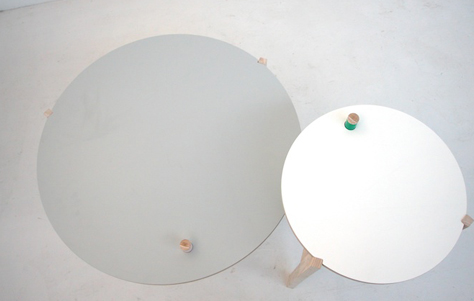
Alonso’s portable piece shows true ingenuity. “A collection of collapsible side tables that can be folded flat in seconds,” the A-side tables break down the very idea of “table” into its component parts.
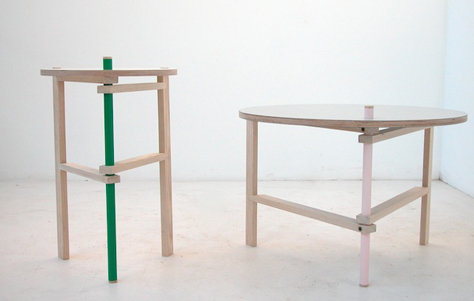
In Alonso’s incarnation, that means a trio of powder coated steel, ash, and laminated plywood in three equally distinct components: a pair of pivoting t-shaped wooden braces, a simple cylindrical pole, and a circular table top.
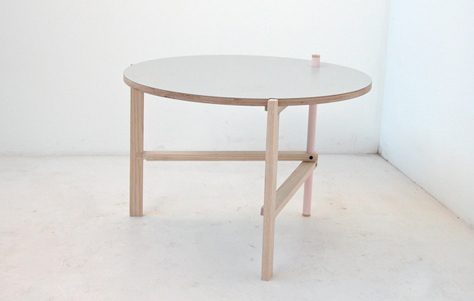
The method of setting up and taking down is intuitive. The base of the A-side table is created by setting the pivoting braces in a sixty degree arc and inserting the pole at the point of the pivot. From there, it’s simply elementary to fit the hole in the table top atop the pole like the proverbial cherry.
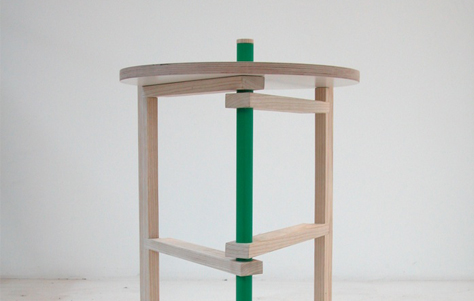
The A-side table’s intuitive and easy assembly makes it an ideal piece for small spaces as well as for the imminently transient—a characterization which, in Alonso’s formulation, fits us all to a T: “spaces need to be flexible for different uses and change from time to time, as we move from one flat to the next, which makes us ‘long term visitors’ in a way. This is a proposal for a ‘temporary’ piece of furniture that would accommodate to this kind of living.”
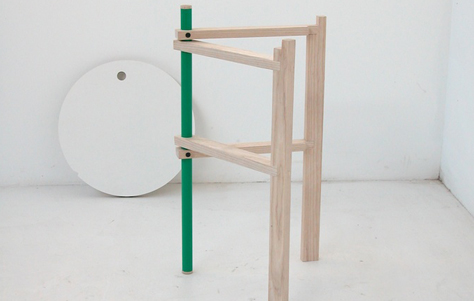
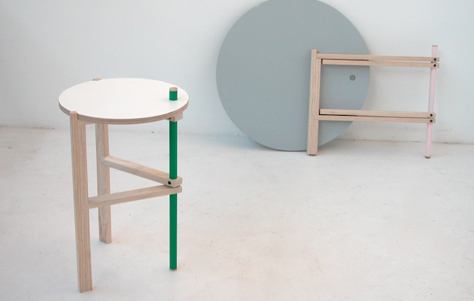
About the Manufacturer: the philosophy of designer Tomás Alonso might be rather succinctly characterized as function first and material second. Somewhat critical of pieces that obfuscate the line between art and design, Alonso cherishes functionality and relishes basic materials. He melds wood and steel into the highly geometrical shapes of his tables, chairs, stools, and lights: “The very simple aesthetic qualities of his objects reveal the expressive potential of each specific material, which is also his main source of inspiration, conveying an expressive immediacy which makes his products universal and transgenerational.”
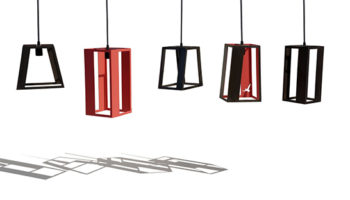



Leave a Reply